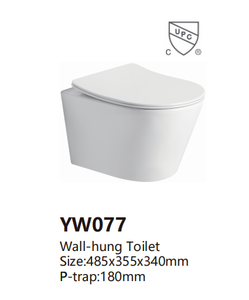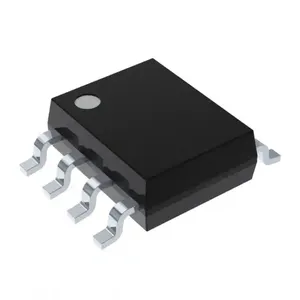(603 منتجًا متوفرة)

















































































































































































هناك أنواع متعددة من المرحاض القياسي، كل نوع مصمم لتطبيقات واحتياجات محددة. إليك بعض الأنواع الأكثر شيوعًا:
المرحاض القياسي ذو التصميم المتصل
هذا النوع من المرحاض القياسي يتميز بشعبيته الكبيرة بسبب سهولة تركيبه واستخدامه. يتم توصيل الخزان بالوعاء بشكل وثيق، لتشكيل وحدة واحدة. غالبًا ما يتم العثور على المرحاض القياسي ذو التصميم المتصل في المنازل والمكاتب بسبب تصميمه الأنيق واستهلاكه الفعال للمياه. يتم التركيب من خلال الجدار، ويستخدم نظام سحب المياه.
المرحاض القياسي المخفي
يُعد مظهر هذا المرحاض أكثر أناقة نظرًا لوجود الخزان مخفيًا داخل الجدار، مما يجعله خيارًا مناسبًا للحمامات العصرية. على الرغم من عدم وضوح الخزان، يتم استخدام لوحة السحب المثبتة على الجدار لتشغيله. يُعد المظهر النظيف والواسع لهذا المرحاض شعبيًا في تصاميم الحمامات المعاصرة. يتميز بفعالية استهلاك المياه ويستخدم نظام سحب ثنائي.
المرحاض القياسي المعلق على الجدار
كما يوحي الاسم، يتم تثبيت هذا النوع من المرحاض القياسي على الجدار بدلاً من الأرض. يجعل هذا التصميم من السهل تنظيف الأرض. غالبًا ما يتم العثور على هذا المرحاض في الحمامات الصغيرة حيث المساحة محدودة. يمنح الحمام شعورًا أكثر اتساعًا نظرًا لعدم تلامسه مع الأرض. كما أنه يستخدم نظام سحب ثنائي وهو فعال جدًا في استهلاك المياه.
المرحاض القياسي للجلوس القرفصاء
يختلف تصميم هذا المرحاض عن بقية الأنواع، حيث تم تصميمه للاستخدام أثناء القرفصاء. إنه شعبي في أجزاء من آسيا والشرق الأوسط. يتم تركيب المرحاض القياسي للجلوس القرفصاء على مستوى الأرض، مما يسهل على الناس استخدامه دون الجلوس. إنه أكثر صحة لبعض الثقافات وهو متين للغاية نظرًا لتصنيعه من مواد خزفية عالية الجودة.
المرحاض القياسي الذكي
هذا هو أحدث أنواع المرحاض القياسي، وهو مزود بميزات مثل السحب التلقائي، والتنظيف الذاتي، والمقاعد المدفأة. يُعد المرحاض القياسي الذكي مريحًا وصحيًا للغاية، مما يجعله خيارًا مناسبًا للحمامات الفاخرة. إنه سهل الاستخدام للغاية، حيث يحتوي على مستشعرات تقوم بالسحب تلقائيًا عند اقتراب شخص أو مغادرته. تستخدم ميزة التنظيف الذاتي ضوء الأشعة فوق البنفسجية للحفاظ على الوعاء نظيفًا، وتُعد المقاعد المدفأة إضافة ممتعة خلال الطقس البارد.
هناك العديد من ميزات المرحاض القياسي التي يجب مراعاتها. وتشمل:
تُستخدم المراحيض القياسية في مختلف الصناعات والشركات. إليك أهمها:
صناعة البناء
تُستخدم المراحيض القياسية على نطاق واسع في صناعة البناء. يرجع ذلك إلى أنها أساسية لأعمال الأساس، مثل الدعامات والتدعيم، مما يخلق بيئة آمنة ومستقرة للبناء. كما تُستخدم لبناء الجدران الداعمة، والجدران المساندة، وغيرها من الهياكل. تجعلها قوتها ومتانتها وقدرتها على تحمل ضغط عالٍ خيارًا مثاليًا لهذه التطبيقات. يفضل المطورون والمهندسون استخدام المرحاض القياسي من البلاستيك PVC نظرًا لفعاليته من حيث التكلفة وسهولة استخدامه.
صناعة التعدين
تُستخدم المراحيض القياسية أيضًا في صناعة التعدين. تُستخدم لبناء الأنفاق، والآبار، وغيرها من الهياكل تحت الأرض. توفر بيئة آمنة ومستقرة لعمليات التعدين. تجعلها مقاومة التآكل وقدرتها على تحمل البيئات القاسية خيارًا مفضلًا في صناعة التعدين. تُستخدم أيضًا لنقل المعادن وغيرها من المواد بطريقة آمنة وفعالة.
صناعة النفط والغاز
تُستخدم المراحيض القياسية في صناعة النفط والغاز لحفر واستكشاف. تُستخدم لبناء المنصات، والأنابيب، وغيرها من الهياكل. تجعلها قوتها وثباتها خيارًا مفضلًا في هذه الصناعة. تُستخدم أيضًا لنقل النفط والغاز وغيرها من المواد بطريقة آمنة وفعالة. تجعلها قدرتها على تحمل ضغط عالٍ ودرجة حرارة عالية خيارًا مثاليًا لهذا التطبيق.
مشاريع البنية التحتية
تستخدم مشاريع البنية التحتية، مثل الجسور والطرق السريعة والمطارات، المراحيض القياسية أيضًا. توفر الدعم والثبات اللازمين لهذه الهياكل. تجعلها فعاليته من حيث التكلفة وسهولة استخدامه خيارًا مفضلًا لمشاريع البنية التحتية.
البناء الجاهز والنمطي
تُستخدم المراحيض القياسية أيضًا في البناء الجاهز والنمطي. تُستخدم لإنشاء عناصر خرسانية جاهزة، مثل الجدران والألواح والعوارض. تجعلها دقتها وفعاليته خيارًا مفضلًا لهذا النوع من البناء. تُستخدم أيضًا في إنشاء وحدات نمطية، مثل المنازل والمدارس والمستشفيات.
هناك بعض العوامل التي يجب مراعاتها عند اختيار المرحاض المثالي. إليك بعضها:
طلب السوق
انظر إلى ما يريده السوق. بعض الأماكن تُفضل المراحيض ذات الطراز الغربي، بينما البعض الآخر يُفضل المراحيض للجلوس القرفصاء. اكتشف ما يُفضلّه البناة والأشخاص الذين يستخدمون المراحيض في منطقتك. إذا كان هناك طلب كبير على نوع معين من المراحيض، فستباع بشكل أفضل.
التصميم والتكنولوجيا
ستُعجب العملاء المراحيض ذات التصاميم والميزات الجديدة الرائعة. أشياء مثل أنظمة السحب الحديثة والمظهر الأنيق. ابحث عن أحدث التقنيات والتصاميم التي سيجدها العملاء جذابة.
الجودة والموثوقية
تأكد من أن المراحيض ستدوم لفترة طويلة ولن تنكسر بسهولة. ابحث عن المراحيض المصنوعة من مواد قوية تلبي معايير عالية. اقرأ المراجعات لمعرفة أداء المراحيض مع مرور الوقت.
مراعاة المساحة
تتوفر المراحيض القياسية بأحجام وأنماط مختلفة. فكر في أنواع المباني والحمامات التي يملكها عملاؤك. إذا كان لدى العملاء مساحة محدودة، فستكون تصاميم المراحيض المدمجة أفضل. بالنسبة للمنازل الأكبر، فستكون المراحيض الأكثر اتساعًا مناسبة. اختر المراحيض بأحجام وأنماط مختلفة لتناسب المساحات والاحتياجات المتنوعة.
مراعاة الميزانية
انظر إلى الأموال المتاحة. توجد مراحيض فاخرة باهظة الثمن وطرازات أساسية أكثر بأسعار معقولة. حدد نطاق الأسعار الذي يناسب ميزانيتك. ثم اختر المراحيض التي تقع ضمن تلك الميزانية. هذا يضمن أن تكون الأسعار معقولة لما يتم تقديمه.
سهولة التركيب
ابحث عن المراحيض التي يسهل تركيبها. ستتسبب الطرازات التي تتطلب سباكة معقدة أو أجزاء إضافية في حدوث مشاكل للمقاولين. اختر المراحيض التي يمكن للمقاولين ذوي الخبرة تركيبها بسرعة دون مشاكل. هذا سيجعل العملاء سعداء.
التوافق مع أنظمة السباكة المحلية
تأكد من أن المراحيض ستعمل مع أنظمة السباكة حيث يتم تركيبها. تتمتع البلدان المختلفة بأحجام أنابيب مختلفة وطرق سحب مختلفة. تأكد من أن المراحيض متوافقة قبل اختيارها.
س1: ما الفرق بين المرحاض أحادي القطعة وذو قطعتين؟
ج1: يحتوي المرحاض القياسي أحادي القطعة على جميع مكوناته في وحدة واحدة. يسهل التركيب لأنه وحدة واحدة. يحتوي المرحاض ذو القطعتين على خزان منفصل ووعاء. إنه أكثر شيوعًا وسهولة في النقل.
س2: ما هو أكثر أنواع المراحيض شيوعًا؟
ج2: أكثر الأنواع شيوعًا هو المرحاض (WC). يستخدم على نطاق واسع في المنازل والمباني. غالبًا ما يكون المرحاض القياسي هو المرحاض القياسي، ولكن يمكن أن يكون المرحاض أيضًا مرحاضًا غربيًا للجلوس.
س3: ماذا يعني EWC في مجال المراحيض؟
ج3: EWC تعني European Water Closet. يُستخدم مصطلح EWC بشكل شائع في أوروبا وأجزاء أخرى من العالم للإشارة إلى المراحيض التي ليست مراحيض قياسية من الطراز الأمريكي.